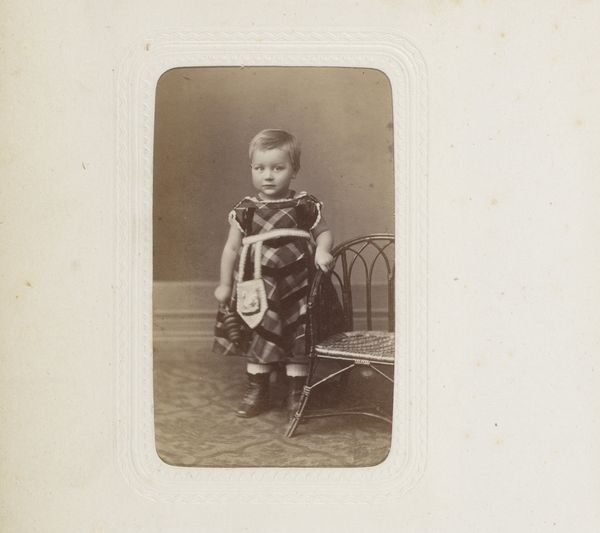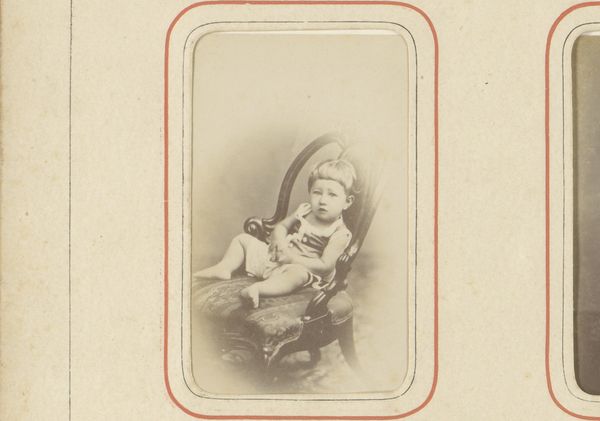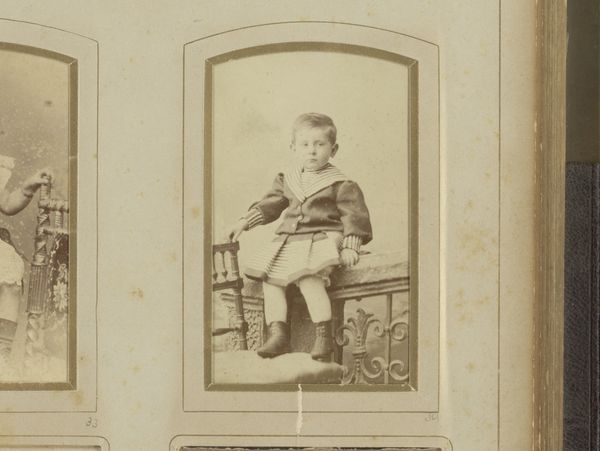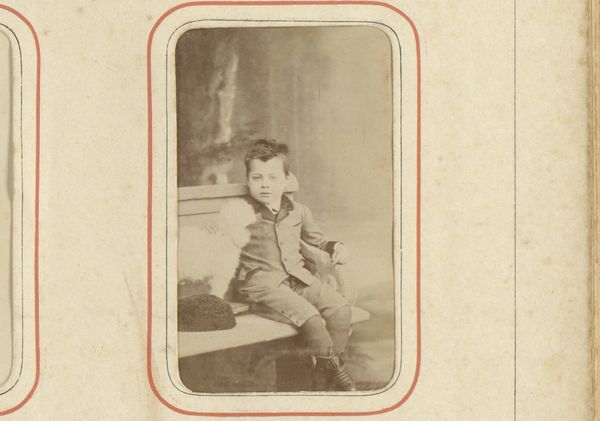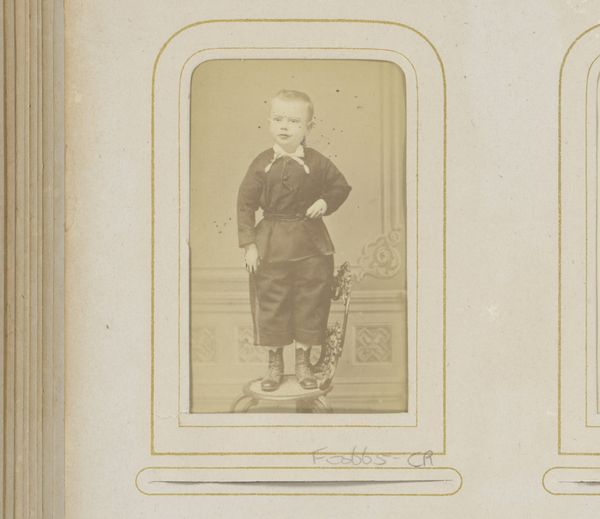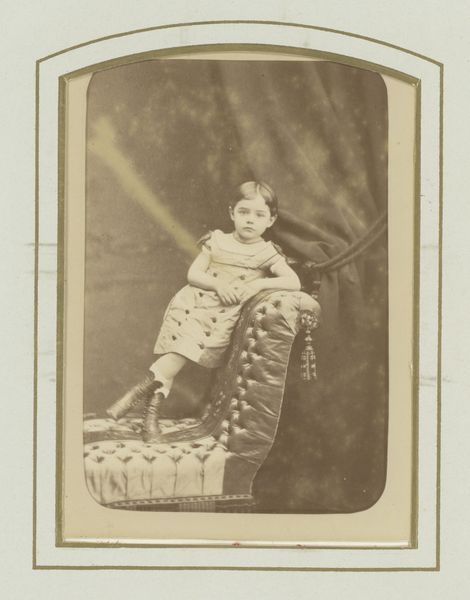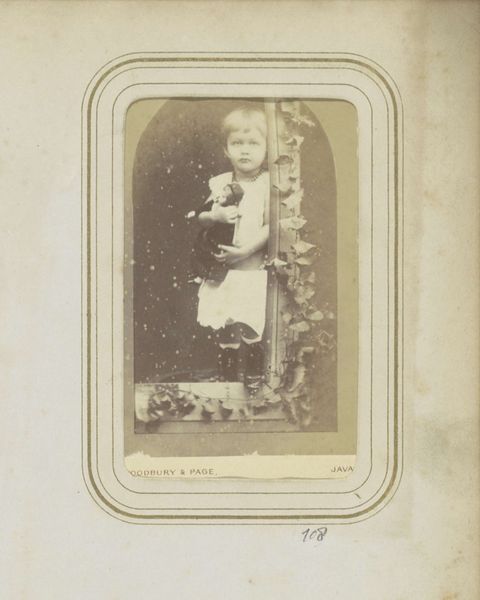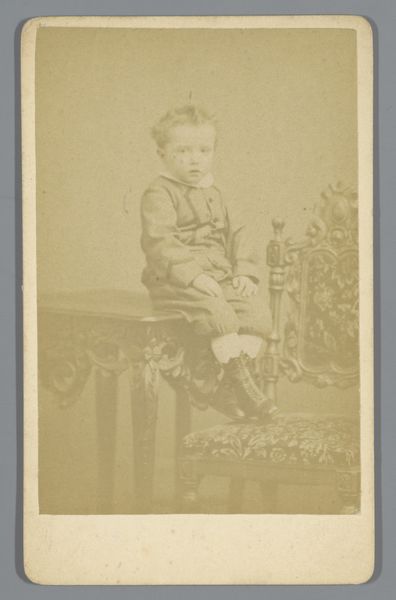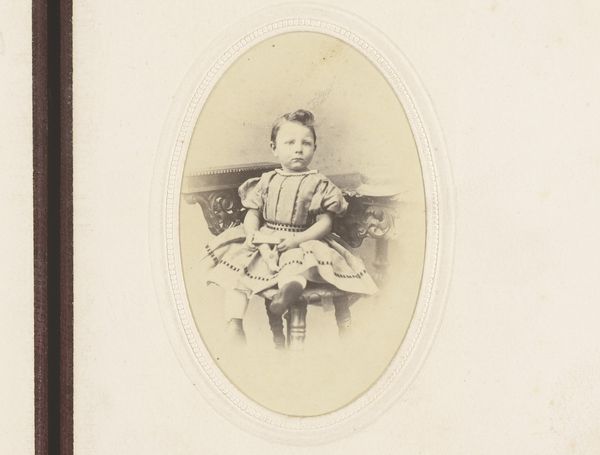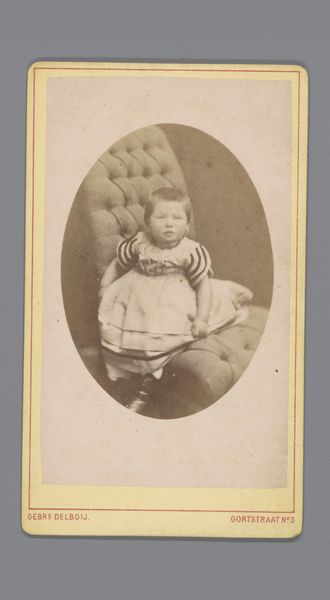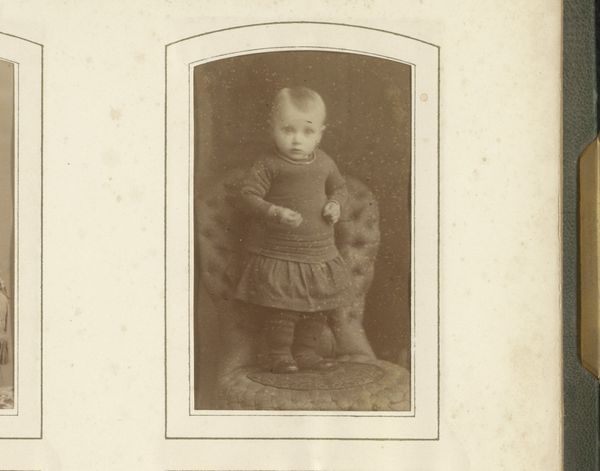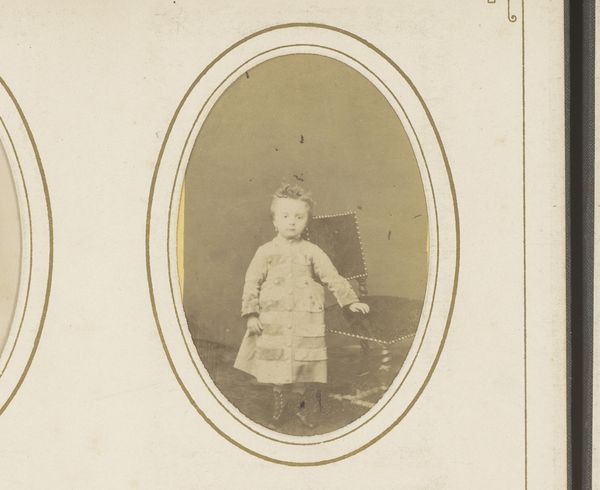
photography
#
portrait
#
photography
#
19th century
#
genre-painting
Dimensions: height 82 mm, width 50 mm
Copyright: Rijks Museum: Open Domain
Editor: Here we have a photographic portrait, "Portret van een meisje, staand bij een stoel en een speelgoed paard", created sometime between 1858 and 1890 by A. Böeseken. It strikes me as a really intimate look into childhood, but the girl doesn't look particularly happy. What stands out to you when you look at this piece? Curator: Well, the stiffness of the pose is quite common for photographs of that era. Early photography demanded long exposure times, influencing the subjects and their representation. Notice how the prop of the toy horse becomes another element of staged respectability. Do you think the inclusion of the toy makes the image more sympathetic? Editor: Perhaps, it definitely gives a clue about her age and social standing. Were these formal portraits common for children from all social classes at the time? Curator: Initially, no. Photography was expensive and largely reserved for the upper and middle classes. It was a way to solidify and project a family's status. So, while it seems intimate to us, the photo operates very much as a social marker of the family's position, more than capturing true individuality. Editor: So it’s less about capturing the girl's essence and more about presenting her within a specific social framework? That’s interesting! It changes how I see her expression; it seems almost performative now. Curator: Exactly! And thinking about the social context, consider the gaze itself: the expectation that people look a certain way to communicate decorum and adherence to certain ideals. Editor: It's fascinating how much a single image can reveal about the society and its values when you dig a bit deeper. Thank you for your insights. Curator: My pleasure. It’s always good to reconsider what is ‘behind’ the photograph to learn about visual expectations.
Comments
No comments
Be the first to comment and join the conversation on the ultimate creative platform.
